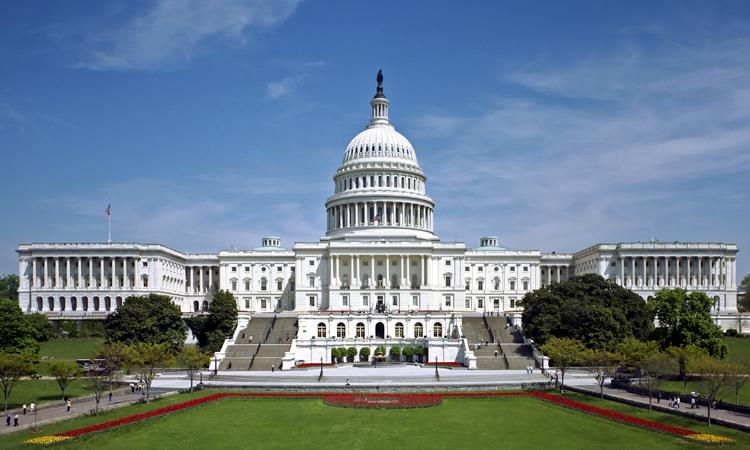In a significant restructuring move, the U.S. government’s primary science funding agency has announced the elimination of 37 divisions, a decision that is raising eyebrows and prompting discussions about the future of scientific research and equity in funding initiatives. Among the casualties of this sweeping purge is the agency’s dedicated equity unit, which has been pivotal in addressing disparities in research opportunities and outcomes across diverse communities. This development reflects broader trends in governmental priorities surrounding scientific funding, prompting stakeholders to question the implications for innovation and inclusivity in the nation’s research landscape. As the agency grapples with evolving challenges, the ramifications of this restructuring will likely reverberate through the scientific community for years to come.
US Governments Science Foundation Cuts Spark Controversy and Debate
The recent decision by the US government’s science foundation to eliminate 37 divisions, including its equity unit, has ignited a firestorm of controversy and debate among scientists, policymakers, and advocates for social justice. Critics argue that this move undermines efforts to ensure that all communities have access to scientific advancements and resources. These cuts come at a time when fostering diversity in STEM fields is more critical than ever, raising questions about the implications for underrepresented groups in science and technology.
Proponents of the decision defend it as a necessary measure to streamline operations and reduce bureaucracy within the foundation. They argue that reallocating resources will lead to more efficient project outcomes and facilitate innovation. However, opponents fear that without dedicated efforts to address equity, the field of scientific research may become increasingly homogenous. Key discussion points include:
- The potential impact on marginalized communities
- Future funding opportunities for diverse research projects
- The long-term consequences for the scientific community
| Aspect | Proponents’ View | Opponents’ View |
|---|---|---|
| Resource Allocation | Improved efficiency | Loss of equity focus |
| CommunityImpact | Increased access to funding | Neglect of marginalized groups |
| Long-term Vision | Streamlined research capabilities | Homogeneity in science |
Impact of Division Reductions on Scientific Innovation and Research Equity
The recent decision by the US government’s science foundation to eliminate 37 divisions, including its equity-focused unit, raises significant concerns about the future landscape of scientific innovation. Divisions dedicated to fostering diversity and inclusion have long played a crucial role in broadening participation in STEM fields. With their reduction, there is a palpable fear that opportunities for underrepresented groups may diminish, ultimately stifling the rich tapestry of ideas that fuel scientific breakthroughs. In addition, the loss of these units complicates efforts to balance funding and resources, which could lead to a homogenization of research agendas that prioritize established fields over nascent or interdisciplinary inquiries.
The ramifications of these cuts extend beyond immediate research funding; they could also entrench systemic inequities across the scientific community. As the foundation reallocates resources, the following areas might face heightened challenges:
- Access to Funding: Marginalized groups may find it increasingly difficult to secure grants.
- Networking Opportunities: Elimination of specialized networks designed to foster collaboration among diverse researchers.
- Innovation Potential: Research that addresses broad societal challenges may decrease as funding priority shifts.
Table 1 summarizes the potential impacts of the division reductions:
| Impact Area | Short-Term Effects | Long-Term Outlook |
|---|---|---|
| Research Diversity | Reduced participation from diverse groups | Possibly stagnant innovation |
| Funding Equity | Concentration in prevalent fields | Widening funding gap |
| Collaborative Networks | Loss of critical connections | Increased isolation for underrepresented researchers |
Recommendations for Future Funding Strategies and Organizational Restructuring
In light of the recent restructuring by the US government’s science foundation, organizations are encouraged to consider innovative funding strategies that prioritize sustainability and inclusivity. Moving forward, it is crucial to develop a diversified funding model that encompasses both public and private sector contributions. Potential strategies include:
- Public-Private Partnerships: Collaborating with tech companies and philanthropic organizations to co-fund research initiatives.
- Grant Reallocation: Shifting existing grants to support underrepresented disciplines and projects that promote equity in science.
- Crowdfunding Campaigns: Engaging the public through crowdfunding platforms to fund specific scientific projects.
- Long-term Funding Commitments: Establishing endowments that secure continuous financial support for critical areas of research.
Additionally, organizational restructuring must focus on creating agile frameworks that can adapt to evolving scientific trends and community needs. By adopting a more flat organizational structure, institutions can enhance collaboration and decision-making processes. Recommendations for effective restructuring include:
| Strategy | Description |
|---|---|
| Interdisciplinary Teams | Facilitating teams that combine various scientific disciplines to foster innovation. |
| Decentralized Decision-Making | Empowering local leaders to make decisions that reflect regional priorities and challenges. |
| Continuous Learning Programs | Implementing training and development resources to enhance staff capability in emerging technologies and methodologies. |
In Retrospect
the U.S. government’s recent decision to eliminate 37 divisions within the National Science Foundation marks a significant shift in the landscape of federal scientific funding and initiative. The dismantling of the equity unit, among other departmental closures, has drawn both concern and support from various stakeholders across the research community. As the foundation refocuses its resources and priorities, the implications for future scientific endeavors and equitable representation in federal research funding remain to be seen. Observers will be closely monitoring how these changes will impact the landscape of U.S. science and technology, as well as the broader discussions surrounding inclusivity and access within the scientific community. The evolving narrative surrounding these developments will undoubtedly continue to shape the dialogue on the government’s role in fostering scientific advancement and equity.
